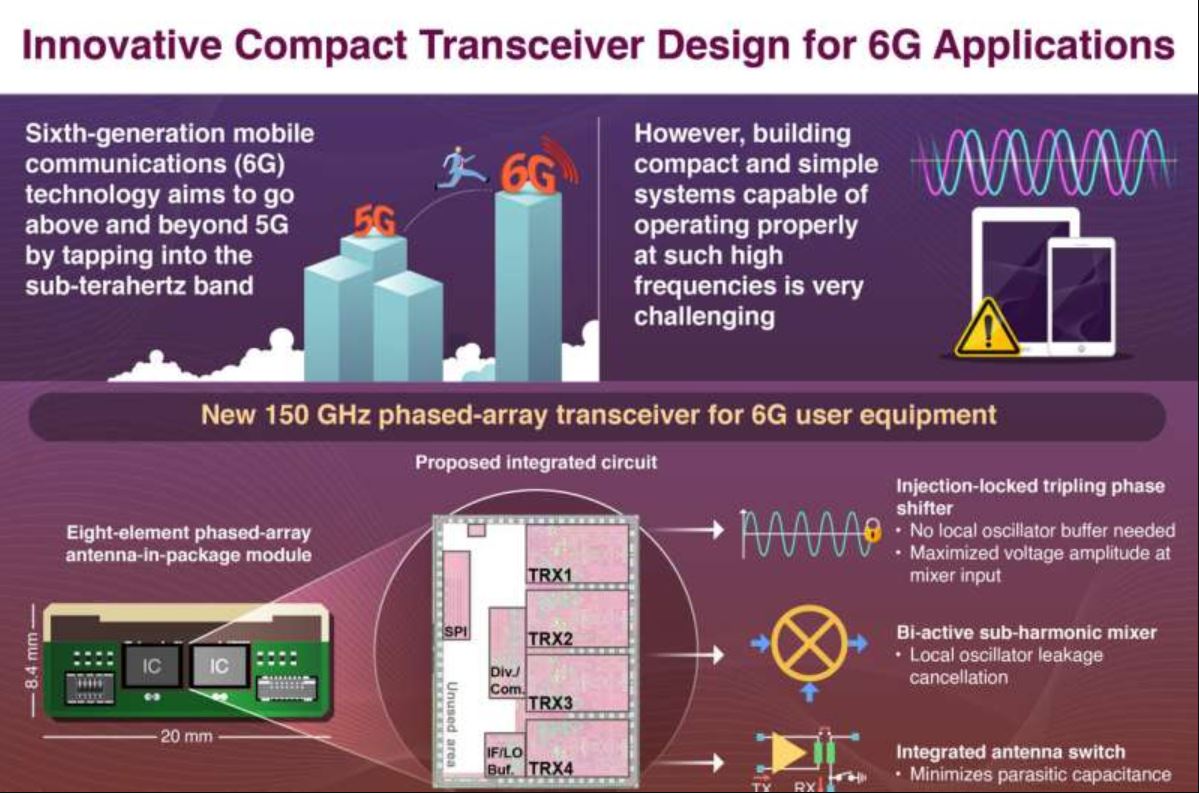 Researchers in Japan are bringing 6G one step closer with an ultra-compact, low-power phased-array transceiver module engineered for next-generation mobile devices. Operating at 150 GHz, this innovative design aims to deliver wireless data speeds that far outpace today’s 5G systems—even reaching over 100 Gbps by tapping into sub-terahertz D-band frequencies (110–170 GHz). Although these high frequencies come with challenges like signal loss and the task of miniaturising key components, the team has met these obstacles with impressive ingenuity.
Researchers in Japan are bringing 6G one step closer with an ultra-compact, low-power phased-array transceiver module engineered for next-generation mobile devices. Operating at 150 GHz, this innovative design aims to deliver wireless data speeds that far outpace today’s 5G systems—even reaching over 100 Gbps by tapping into sub-terahertz D-band frequencies (110–170 GHz). Although these high frequencies come with challenges like signal loss and the task of miniaturising key components, the team has met these obstacles with impressive ingenuity.
Professor Kenichi Okada and his colleagues at the Institute of Science Tokyo, together with the National Institute of Information and Communications Technology (NICT), have developed a compact antenna-in-package radio module that was showcased at the 2025 Symposium on VLSI Technology and Circuits in Kyoto. They introduced a design featuring an injection-locked tripling phase shifter that knocks out the need for power-hungry local oscillator buffers by connecting directly to the mixer. A smart bi-active sub-harmonic mixer – running at half the local oscillator frequency – further cuts down on leakage while keeping performance tight. Even the antenna switch finds a home inside the amplifier matching networks, reducing parasitic capacitance and minimising signal loss.
The eight-element module, which measures just 8.4 mm by 20 mm, delivers a maximum data rate of 56 Gbps, an effective radiated power of 25.7 dBm, and consumes only 150 mW per element in transmission mode. Whether you’re in industrial automation, immersive entertainment, or precision medical tech, this compact module brings a welcome boost in power density and efficiency for both base stations and low‑power terminals.








